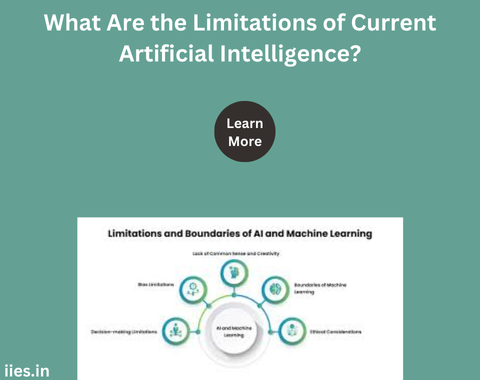
Artificial Intelligence (AI) has made remarkable strides in recent years, transforming industries and revolutionizing the way we live, work, and interact. From self-driving cars to personalized recommendations on streaming platforms, AI’s applications are vast and varied. However, despite its impressive capabilities, current AI still has significant limitations. Understanding these limitations is crucial for setting realistic expectations and guiding future research and development.
Most AI systems today are specialized or narrow AI, designed to perform specific tasks within a limited domain. For instance, an AI trained to play chess at a superhuman level cannot apply its “intelligence” to other games or tasks like driving a car or diagnosing diseases. This limitation arises because these systems rely on vast amounts of data from a single domain and often lack the ability to generalize knowledge across different contexts. True general AI, which can understand, learn, and apply knowledge in a broad, human-like way, remains an elusive goal.
AI models, particularly those based on deep learning, require enormous amounts of data to function effectively. The performance of these models is highly dependent on the quantity, quality, and diversity of the data they are trained on. If the data is biased, incomplete, or unrepresentative, the AI system will inherit and even amplify these flaws. For example, AI systems trained on biased data have been shown to perpetuate gender, racial, and socioeconomic biases, leading to unfair or unethical outcomes in areas like hiring, lending, and law enforcement.
Many AI systems, especially those involving deep learning, function as “black boxes,” meaning that their decision-making processes are not easily interpretable by humans. This lack of transparency can be problematic in critical applications such as healthcare, finance, and criminal justice, where understanding the rationale behind decisions is essential. The challenge of explainability—making AI systems more understandable to humans—is a major area of ongoing research.
AI systems excel at pattern recognition and data processing but struggle with tasks requiring common sense, abstract thinking, or reasoning. For example, while an AI can recognize objects in an image with high accuracy, it may not understand the context or relationships between objects in a meaningful way. This limitation is evident in Python natural language processing (NLP) as well. Although AI can generate human-like text, it often lacks the deep understanding and nuance that come naturally to humans.
The rapid deployment of AI technologies has raised significant ethical and social concerns. Issues such as job displacement, privacy invasion, surveillance, and the potential misuse of AI for malicious purposes are becoming increasingly prominent. Moreover, the concentration of AI capabilities in the hands of a few powerful entities—whether governments or large corporations—raises concerns about accountability, transparency, and control. Addressing these ethical and social challenges requires careful consideration and the establishment of robust frameworks and regulations.
Training state-of-the-art AI models, particularly large-scale deep learning models, is computationally intensive and requires significant energy resources. The environmental impact of these processes is becoming a growing concern, as the carbon footprint of AI research and deployment increases. As AI continues to scale, finding more energy-efficient algorithms and hardware solutions will be essential to mitigate its environmental impact.
AI systems can be surprisingly fragile when faced with adversarial attacks—small, carefully crafted perturbations to input data that can cause the AI to make incorrect or even absurd decisions. For instance, an image classification model might confidently misclassify an image with just a few pixel changes that are imperceptible to the human eye. This vulnerability poses significant risks, especially in security-critical applications like autonomous driving and cybersecurity.
While AI can generate art, music, and even write articles, it still operates within the bounds of its training data and algorithms. AI lacks true creativity and the ability to generate genuinely novel ideas or concepts. Its outputs are often a remix of existing patterns rather than something fundamentally new. This limitation is particularly evident in areas requiring innovative thinking and problem-solving.
AI is a powerful and transformative technology, but it is far from perfect. Its current limitations highlight the challenges that lie ahead in the journey towards more advanced and reliable AI systems. By recognizing and addressing these limitations, researchers, developers, and policymakers can work together to ensure that AI continues to advance in a way that is ethical, transparent, and beneficial for society as a whole. Understanding these limitations also serves as a reminder that, while AI can augment human capabilities, it cannot replace the unique and multifaceted nature of human intelligence.
Indian Institute of Embedded Systems – IIES